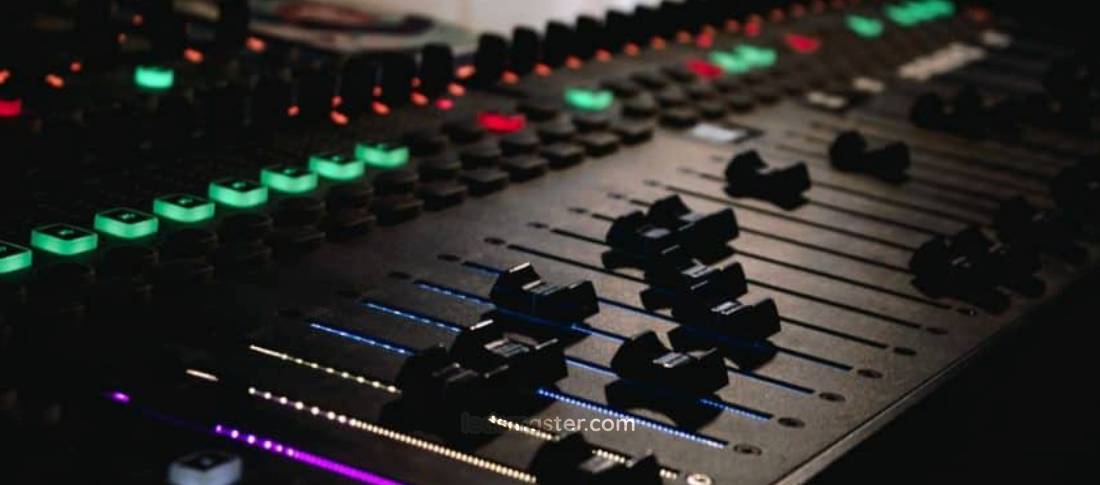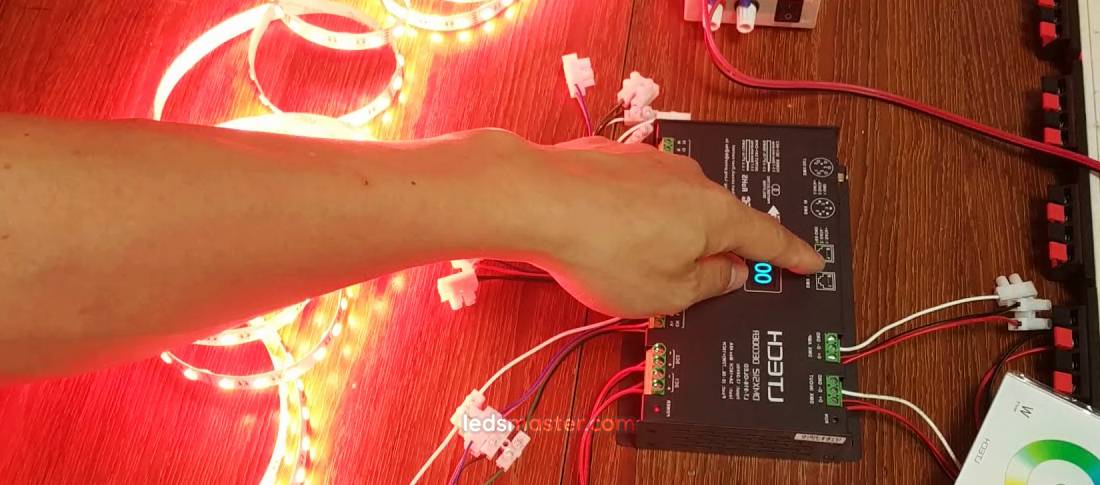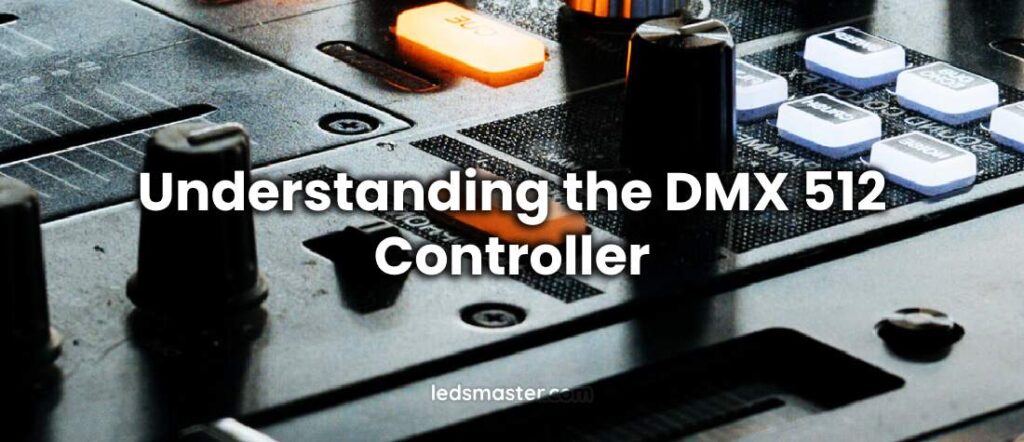DMX 512, an abbreviation for Digital Multiplex with 512 channels, represents a standardized communication protocol designed specifically for the precise management of lighting and effects equipment. This protocol has become a cornerstone of modern lighting design, enabling users to orchestrate complex lighting setups with remarkable precision and ease.
The significance of DMX 512 lies in its ability to manage up to 512 channels, each capable of controlling different aspects of lighting fixtures and effects devices. By sending digital data over a network of cables, DMX 512 facilitates real-time communication between a central controller and various connected devices, ensuring that each component responds accurately to the commands issued. This capability is especially critical in environments where intricate and dynamic lighting effects are required, such as in theatrical productions, concerts, architectural displays, and themed events.
This article delves into the fundamentals of DMX 512, examining its core principles, the essential components that constitute a DMX 512 system, and the intricacies of configuration and programming. It also covers troubleshooting techniques and maintenance practices to ensure the system operates smoothly and reliably. Furthermore, the article explores the diverse range of applications for DMX 512, highlighting its adaptability and effectiveness in various settings beyond traditional stage lighting. From enhancing the visual appeal of architectural features to creating immersive experiences in entertainment venues, DMX 512’s versatility makes it an invaluable tool for lighting professionals across multiple industries.

Table of Contents
ToggleBasics of DMX 512
DMX 512 was developed in the 1980s as a standardized protocol to meet the needs of theatrical lighting and stage effects with unprecedented precision. This groundbreaking protocol fundamentally transformed the lighting industry by providing lighting designers and technicians with a powerful tool for managing complex lighting setups with remarkable accuracy. Prior to DMX 512, controlling multiple lighting fixtures and effects often required cumbersome and imprecise methods. The introduction of DMX 512 addressed these challenges by enabling a streamlined and effective approach to lighting control.
Digital Transmission and Control
The DMX 512 protocol transmits digital data across a network of cables, facilitating the control of a diverse array of lighting fixtures, dimmers, and special effects devices. This digital transmission method allows for reliable communication between the controller and the equipment, ensuring that lighting effects can be executed with precision and consistency. The protocol supports up to 512 channels, each capable of controlling a specific aspect of a fixture or effect.
Channel Addressing and Management
Each channel within the DMX 512 system is assigned a unique address, which enables the controller to manage multiple fixtures individually or in groups. These channels correspond to various parameters such as intensity, color, and movement. The ability to assign unique addresses to each channel ensures that each fixture responds accurately to the control signals, allowing for intricate coordination and synchronization across the entire lighting setup.
Granularity of Control
DMX 512 utilizes an 8-bit value range for each channel, with values ranging from 0 to 255. In this context, a value of 0 typically indicates that the fixture is turned off or set to its minimum level, while a value of 255 represents the fixture at its full intensity or maximum setting. This 8-bit resolution provides a high degree of control, enabling lighting designers to achieve subtle gradations in brightness, precise color mixing, and smooth transitions between different lighting states. The granularity of control afforded by DMX 512 makes it possible to create elaborate and dynamic light shows, tailored to the specific requirements of live performances, theatrical productions, and other complex lighting scenarios.
Applications and Flexibility
The protocol’s ability to handle such a wide range of channels and values allows for sophisticated programming and execution of lighting effects. Lighting designers can craft elaborate scenes and sequences, incorporating changes in color, intensity, and movement to enhance the visual impact of their productions. Whether used to create dramatic lighting effects for a stage performance, synchronize lighting with music at a concert, or highlight architectural features in a building, DMX 512 provides the flexibility and precision needed to meet the diverse demands of modern lighting design.
Components of DMX 512 System
A typical DMX 512 system comprises several key components, each of which plays a crucial role in ensuring the operation and effectiveness of the entire lighting setup. These components work together seamlessly to enable precise control, reliable communication, and dynamic effects, making the DMX 512 system an essential tool in modern lighting design.
DMX 512 Controller
The DMX 512 controller is the central device used to send control signals to the lighting fixtures. It can range from simple, manual controllers to sophisticated, computer-based systems. The controller allows users to set parameters for each channel, including brightness, color, and movement, and can store and recall various lighting scenes and effects.
DMX Fixtures
DMX fixtures are the lighting devices and effects units controlled by the DMX 512 system. These can include stage lights, moving heads, fog machines, and other equipment that responds to DMX signals. Each fixture is assigned a unique DMX address, which allows the controller to communicate with and manage each unit individually.
DMX Cables
DMX cables are used to connect the controller to the fixtures and other components of the system. These cables typically have three or five-pin XLR connectors and are designed to transmit data signals over long distances with minimal signal degradation. Proper cabling is crucial for maintaining signal integrity and ensuring reliable communication between the controller and fixtures.
DMX Terminators
DMX terminators are used to prevent signal reflection and interference at the end of a DMX cable run. They are essential for maintaining signal quality and preventing errors in the data transmission. A terminator is typically a resistor placed in the last connector of the DMX chain, ensuring a clean and stable signal.
DMX 512 Configuration and Programming
Configuring and programming a DMX 512 system is a multifaceted process that involves several critical steps to ensure that the controller and fixtures work together seamlessly to produce the desired lighting effects. This process encompasses setting up the controller, addressing the fixtures, creating and managing lighting scenes, and programming dynamic effects. Each step is essential for achieving a well-coordinated and responsive lighting setup.

Addressing Fixtures
Each DMX fixture must be assigned a unique address within the DMX universe. This address determines how the fixture will respond to the control signals sent by the controller. Addressing is usually done through a manual setting on the fixture itself or via a digital interface. Proper addressing is crucial for ensuring that each fixture responds correctly to the commands from the controller.
Creating Lighting Scenes
Lighting scenes are pre-defined settings that control multiple fixtures simultaneously. These scenes can include specific colors, intensities, and movements, allowing for complex and dynamic light shows. The DMX controller is used to program and store these scenes, which can be recalled during performances or events. Programming often involves adjusting parameters for each fixture and testing the results to achieve the desired effect.
Using Chases and Effects
In addition to static lighting scenes, DMX controllers can create dynamic effects such as chases, fades, and strobe effects. These effects involve changing lighting parameters over time to produce movement and visual interest. The controller allows users to program these effects and set timing parameters to synchronize with music or other performance elements.
Troubleshooting and Maintenance
Maintaining a DMX 512 system and addressing common issues are essential practices to ensure its smooth operation and prevent disruptions during performances or events. Given the complexity and reliance on digital communication in DMX 512 systems, proactive maintenance and effective troubleshooting are critical to achieving consistent and reliable performance.
Common Issues
Common issues with DMX 512 systems include signal loss, flickering lights, and unresponsive fixtures. Signal loss can occur due to faulty cables, improper termination, or interference. Flickering lights may result from loose connections or issues with the fixtures themselves. Unresponsive fixtures can indicate addressing errors or problems with the controller.
Troubleshooting Steps
To troubleshoot DMX issues, start by checking all connections and ensuring that cables are properly seated. Verify that terminators are in place and functioning correctly. Use a DMX tester to check signal integrity and diagnose problems with the signal transmission. If the issue persists, consult the fixture’s manual or contact the manufacturer for further assistance.
Regular Maintenance
Regular maintenance involves inspecting cables, connectors, and fixtures for signs of wear or damage. Clean fixtures and ensure that cooling systems are functioning correctly to prevent overheating. Update software and firmware for the controller and fixtures as needed to ensure compatibility and performance.
Applications of DMX 512
DMX 512 is widely used in a diverse array of applications beyond its traditional role in stage lighting, showcasing its versatility and adaptability to various environments and events. Originally developed for theatrical productions, the protocol has proven to be invaluable in numerous other settings, from architectural lighting to themed entertainment and even industrial applications.
Theatrical Productions
In theatrical productions, DMX 512 controllers manage stage lighting, effects, and scenery changes. The ability to create complex lighting scenes and effects enhances the visual storytelling and mood of the performance. DMX 512 allows for precise control over each fixture, enabling lighting designers to achieve their creative vision.
Concerts and Live Events
Concerts and live events benefit from the dynamic capabilities of DMX 512. Lighting designers use DMX controllers to synchronize lighting with music, create dramatic effects, and enhance the overall experience for the audience. The flexibility of DMX 512 enables the creation of impressive light shows that can adapt to different performances and themes.
Architectural Lighting
DMX 512 is also used in architectural lighting applications, where it controls the illumination of buildings and landmarks. This can include changing colors, brightness levels, and patterns to create visually striking effects or highlight architectural features. The ability to program and automate lighting changes adds a layer of sophistication to architectural designs.
Entertainment Venues
In entertainment venues such as clubs, theaters, and arenas, DMX 512 controllers manage various lighting and effects systems. The integration of DMX with other technologies, such as video and audio systems, allows for seamless coordination and enhanced experiences for guests.
Conclusion
From its basic principles to advanced programming and troubleshooting, DMX 512 offers a robust and flexible solution for controlling lighting and effects in a variety of settings. Whether used in theatrical productions, concerts, architectural lighting, or entertainment venues, DMX 512 enables precise and dynamic control, making it a vital tool in the world of lighting technology.

